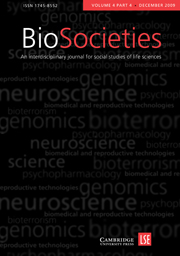Article contents
Creating the Network and the Actors: The FBI's Role in the Standardization of Forensic DNA Profiling
Published online by Cambridge University Press: 01 June 2008
Abstract
This article explores the FBI's early efforts to develop and implement a standardized DNA profiling regime in a legal and scientific landscape shaped by strong defense challenges to the technique. Although the FBI claimed numerous times that its standardization efforts were purely ‘technical’, the FBI knew it had to create a social infrastructure that would serve to ensure the validity and reliability of the forensic DNA evidence. At the center of the system would be the FBI, serving as the obligatory, if reluctant, passage point for both technical and social exchanges. The FBI decided largely by fiat that forensic scientists based in public crime laboratories, but with little molecular biology and genetics training, bore the primary responsibility for setting standards, as well as carrying out, forensic DNA analysis. At the same time, the FBI actively excluded representatives from the private biotechnology companies that introduced the technique into the legal system, as well as the members of the defense community that were responsible for highlighting potential problems with the technique in court.
Keywords
- Type
- Articles
- Information
- Copyright
- Copyright © London School of Economics and Political Science 2008
References
- 5
- Cited by


